What can we learn from each other?

Sweden vs. America: What can we learn from each other?
Every country, every culture has something to teach. Dating a Swede for the past two years has led to numerous conversations contrasting our two countries. What is better about Sweden? What is better about America? In the ideal world, people would cherry-pick the best customs and laws from every culture to create a more optimal human society. Unfortunately, people are stubborn and change is slow. Yet conversations and sharing can plant seeds of change that take root over time. This essay compares and contrasts six broad areas of personal interest, revealing opportunities to improve quality of life in both our countries.

Sweden, along with many European countries, recognize allemansrätten, “everyman’s right” to roam the open countryside.
-
Land of the Free, or Not?
America is often championed as a land of freedom, yet Americans are among the least-free peoples in the developed world. We are everywhere confronted with “Private Property” and “No Trespassing” signs that effectively lock us out of our own country. In comparison, Sweden, along with many European countries, recognize allemansrätten, “everyman’s right” to roam the open countryside. The public is allowed to hike, camp, and forage on private land in Sweden, provided that individuals are respectful, don’t trample crops or harass livestock, and don’t intrude on the landowner privacy, such as by pitching a tent near a home.
Similarly, although one cannot legally drive on a private road in Sweden, it is perfectly okay to walk, bicycle, or ride your horse down that same road. Swedes naturally respect private property and maintain positive relationships with landowners. (Click here for details and exceptions.) America would be a much nicer place if we emulated allemansrätten here, as detailed in my more extensive essay, Posted: Please Trespass.
Counter-intuitively, the Swedish right to roam doesn’t include the right to hunt or fish. Hunting and fishing rights largely belong to private landowners, who typically participate in regional cooperatives to manage leases. For example, we did a week-long, 116 km (72 mile) canoe trip on Sweden’s largest river, the Klarälven, which crossed through three different cooperatives. Each cooperative issues a separate fishing license, which must be purchased in person at different towns along the way, from stores that may or may not be open. (Click here for details.) In the U.S., hunting and fishing is managed by individual states. A fishing license in Montana, for example, is good throughout the state. If you can legally access the water then you can legally fish there.
Overall, Swedes enjoy more freedom than Americans. However, Americans recognize other basic rights that Swedes do not. For example, the need for a toilet is dictated by bodily functions, making it a basic human necessity and a fundamental right according to American customs. Free public toilets are often abundant in the states. Americans also expect free access to toilets in most private businesses, including grocery stories, office supply stores, and banks. Free toilets are comparatively rare across most of Europe. Public institutions, such as museums, are often vastly underserved for the number of visitors, and many public places, such as train stations, offer only coin-operated toilets. In Sweden, the typical cost to access a public toilet is 10 krona ($1.30). Swedes can ask to use toilets in private businesses, but it is culturally uncommon to do so.

New houses in Sweden averaged 893 square feet in 2009, compared to 2,164 square feet in America, trending towards 2,700 square feet today.
-
Everything is Bigger in America
It is well known that portion sizes are smaller in European countries than in America. A “large” cup at a fast food restaurant is equivalent to a small cup in the states. For better or worse, Americans typically have bigger houses, bigger trucks, bigger stores, bigger containers, bigger portion sizes, and bigger bellies.
Family size has shrunk over recent decades, yet house sizes have significantly increased, at least in the states. Current statistics are hard to find, but new houses in Sweden averaged 893 square feet in 2009, compared to 2,164 square feet in America, trending towards 2,700 square feet today. Americans possess more indoor space, often chock full of toys ranging from treadmills to pool tables.
Ditto for recreational vehicles. Few Swedes own campers, preferring to rent camper vans as needed, offering about 80 square feet of living space. In comparison, many Americans park oversized RVs and motorhomes in the driveway, with larger models exceeding 400 square feet and some new models exceeding $200,000.
Cars and trucks are also larger on average in the states than in Sweden. I had one neighbor who drove an oversize, 12 mpg pickup with a one-ton haul capacity, which she used to haul her 50-pound child 15 miles to school and back (four trips x 15 miles daily). Not surprisingly, Americans consume 50% more oil per capita than Swedes.
America has vastly bigger stores than Sweden, including numerous “big box” stores such as Walmart, Costco, or Target. Aside from Ikea, Sweden’s own big box chain, most Swedes shop at smaller, specialized stores.
Container sizes and portion sizes are also larger in the states. Coming from Sweden, my girlfriend is astounded by our 60-ounce peanut butter jars and 3-pound bags of M&Ms, all at affordable prices. Before going home, she stops at the grocery store, filling empty space in her suitcase with peanut butter, oversize cans of beans, pancake mix, brownie mix, and anything else she can squeeze in the load.
On the surface, bigger seems better. But is it really? Americans are plagued by more square footage to heat and cool, vacuum, paint, and organize. Americans are vastly wealthy in possessions, yet often unfathomably indebted. We pay less for fuel, but buy more of it. We “super size” our meals for a bargain price, yet we pay for it with bigger bellies, reduced mobility, and arguably a lower quality of life. Not surprisingly, Swedes live an average of three years longer than Americans.
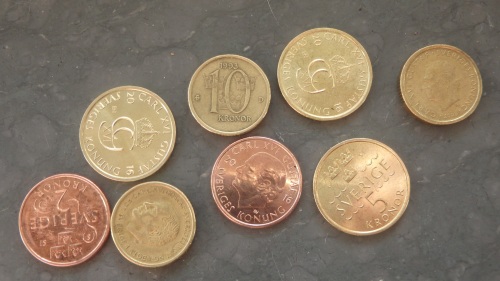
The loose change pictured here, leftover from my travels, adds up to 47 krona or approximately US$5.77. Similar denominations would add up to 47¢.
-
Money Matters
Although Sweden is a member of the European Union, the country has thus far retained its own currency, the krona, rather than adopting the Euro. As with the Euro, the krona has substantial value for loose change. For example, 1 krona, the Swedish equivalent of a penny, is worth approximately US12¢, while the 10 krona coin is worth about $1.25. The loose change pictured here, leftover from my travels, adds up to 47 krona or approximately US$5.77. In other words, loose change has real value, unlike the U.S., where similar denominations would add up to 47¢.
Traveling in both Sweden and Italy, I noticed that coins were convenient for cash transactions. Larger denomination coins are common in either country, such as the 20 krona coin ($2.46) in Sweden or a 2 Euro coin in Italy ($2.35), so a handful of pocket change might add up to US$10 or $20, making coins at least as convenient as paper currency.
In comparison, American coins lack sufficient value to make ordinary purchases, consuming an enormous amount of time for customers or vendors to count out worthless change. Coin currency could be greatly improved in the U.S. if we discontinued the penny and nickel and potentially the dime. The U.S. Mint would greatly prefer that Americans use $1 coins, which cost less than shredding and reprinting worn out $1 bills. Adding a $2 coin and possibly a $5 coin would simplify coin transactions and likely make $1 coins much more popular.
On the other hand, while coin transactions are easier in Sweden, the nation is actually leading the world transition towards a cashless economy. Overall, cash transactions are rapidly declining. Checks are virtually unknown and unimaginable in Sweden. I received incredulous stares when I described using checks in the states. People prefer to pay via online payments and credit cards. Even credit card use is beginning to fade as commerce transitions to all-digital payment systems.
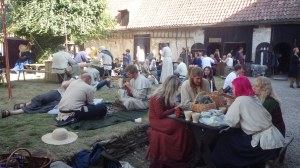
At the Medieval Festival in Visby, Gottland, the juxtaposition of customers wearing centuries-old clothing while buying lunch with smart phones created a strangely incongruous scene.
This trend towards digital commerce was especially evident at the Medieval Festival in Gotland. As might be logically expected, cash still circulated at this old-time market. Yet most vendors also boldly displayed SWIFT code numbers for digital payments. Standing in line at a Medieval food vendor, the juxtaposition of customers wearing centuries-old clothing while buying lunch with smart phones created a strangely incongruous scene. In comparison, few vendors at the festival accepted credit cards.
The downside towards adopting a cashless economy is that older generations are slowest to change, creating inconvenience for many, especially now that the country has begun dismantling ATMs due to declining use.

Like most countries with socialized medicine, Swedes like their healthcare system.
-
The Great Healthcare Debate
The most common comparison between Sweden and America regards our vastly different healthcare systems, for which Americans have strong opinions, typically with little actual experience or knowledge to back it up. In Sweden, going to the doctor costs 200 SEK or about $25 per visit for a maximum limit of 1,100 SEK ($137) per year. All subsequent appointments are free. As if that isn’t free enough, healthcare is entirely free for minors in Sweden. Like most countries with socialized medicine, Swedes like their healthcare system.

Medicine in America is a more terrifying prospect. Americans typically avoid doctors and hospitals when possible, and many people suffer debilitating ailments for years or decades because they cannot afford treatment.
Medicine in America is a more terrifying prospect. Americans typically avoid doctors and hospitals when possible, and many people suffer debilitating ailments for years or decades because they cannot afford treatment. Visits to the emergency room are avoided except in dire situations. Instead of seeking immediate help, patients must debate the severity of an issue, and when possible, delay treatment long enough to schedule an appointment with a doctor days or weeks later to avoid emergency room or hospital rates.
My girlfriend, for example, had an allergic reaction to a bee sting in my front yard, which is 30 miles from the nearest medical clinic. To a Swede, it is a no-brainer to go directly to the hospital or even call an ambulance to ensure expedient care. Being in America, however, the same issue requires more extensive monitoring and evaluation. How bad is the allergic reaction Can we control it with Benadryl? How fast is it spreading? Can she still breathe? Will she still be breathing if I drive to the emergency room instead of calling an ambulance?
These are serious questions that must be cautiously addressed. Responding too conservatively can be dangerous. Over-reacting can be fiscally crippling. In our case, I brought her to the emergency room myself, sans the ambulance, yet still paid $580 for emergency services for a mere bee sting. American healthcare lacks any safety net to compensate for the loss. Coincidentally, this incident happened just as Mylan jacked the price of the Epipen up to $800 each, which industry analysts estimated cost the company only $30 to produce. Janeth went back to Sweden and purchased an Epipen for approximately US$40.

ACL Knee Surgery: With my “bronze” insurance plan, I paid “only” for the insurance, plus the $5,600 deductible, while the insurance company covered the balance of $20,300.
The Affordable Care Act, a.k.a. “Obamacare,” was intended to help fix the American system. However, instead of addressing root causes of outrageous healthcare costs, Congress merely passed legislation requiring citizens to purchase costly health insurance or pay a tax penalty. Obamacare led to my first-ever health insurance, which I needed for surgery and physical therapy to replace a torn ACL, the tendon in the middle of the knee. With my “bronze” insurance plan, I paid “only” for the insurance, plus the $5,600 deductible, while the insurance company covered the balance of $20,300. I was fortunate that the operation and physical therapy fit in the same calendar year, so I didn’t have to pay the deductible twice. In Sweden, the clock starts after the first appointment, so the total cost would not exceed $137, even if it the appointments were split over January 1st.
Americans worry that adopting socialized medicine would result in vastly higher taxes like Sweden. Although Swedes pay as little as 29 percent of their wages towards income taxes, other taxes and employer payments push the effective tax rate up to 40 – 60 percent, depending on income levels. In comparison, the American cost for federal, state, and local taxes, plus Social Security and Medicare withholdings, adds up to an estimated 30 percent average tax rate.
Swedish taxes are higher, but not necessarily due to socialized medicine. Ironically, Americans pay more taxes ($5,960/person in 2013) to subsidize healthcare in our privatized system than any other nation, including countries like Sweden that offer universal healthcare. Free enterprise should theoretically lower prices and improve healthcare, yet we have among the most expensive healthcare and poorest life-expectancy of any developed nation. We could probably learn something from the Swedes, whether or not we precisely copy their healthcare system.

Within Stockholm, a single magnetic stripe card can be used to jump from bus to subway to commuter train or even boat to travel quickly to any part of the city.
-
Beam Me Up
Public transportation in Sweden is truly one of the wonders of the modern world. Sweden is slightly larger than Montana with a population equivalent to Georgia, yet with comprehensive and thoroughly integrated public transportation that includes busses, subways, trains, boats, and “bicycle highways.”
Within Stockholm, for example, a single magnetic stripe card can be used to jump from bus to subway to commuter train or even boat to travel quickly to any part of the city. Stockholm is sometimes described as the “Venice of the North,” being spread out over many islands, hence the necessity of including boat travel for shortcuts in the city transportation system.

Although not cheap, at approximately $14 for 72 hours or $106 monthly, the Swedish system is efficient and the subways, trains, and busses are mostly new or in like-new condition.
Stockholm Central accesses layers upon layers of subways, with the newest platforms located three, three-story escalators below the surface. Although not cheap, at approximately $14 for 72 hours or $106 monthly, the system is efficient and the subways, trains, and busses are mostly new or in like-new condition.
Train and bus service is available to towns big and small throughout the country, and local busses are pervasive. In the small town of Höllviken (population 10,000) for example, sparkling new busses continuously crawled the streets for passengers to transport across town or to local hubs to connect with larger cities.
Highways in Sweden seemed thoroughly adequate, yet Swedes also found the resources to develop a parallel system of bicycle trails and “bicycle highways” along most highways and main roads throughout towns big and small. Rather than sandwiching bicycle lanes between traffic lanes and parked cars, as is common in the states, the Swedes largely built a separate system, providing safe and separate tracks and underpasses for cyclists and pedestrians. Consequently, bicycling is so popular in Sweden that bike racks for 500+ bikes are common. The town square in Uppsala, a college town, included a bike rack complex filled with several thousand bicycles.

Bicycling is so popular in Sweden that bike racks for 500+ bikes are common. The town square in Uppsala, a college town, included a bike rack complex filled with several thousand bicycles.
Many sidewalks are texturized into separate lanes for pedestrians versus cyclists, and standing in the wrong lane can be hazardous to unaware foreigners when cyclists expect pedestrians to be in the other lane. Swedes extend their coding system to the blind, providing specially-textured lines down many sidewalks, even through many public buildings, that can be navigated by feel underfoot.
In comparison, the entire state of Montana has fewer bicycle trails than any moderate-sized town in Sweden. Only the largest cities in Montana offer city busses, mostly underutilized and too few and far between to be of much use anyway. Bus service to small towns is largely nonexistent. The nearest train station is a six-hour drive away, and since it is more expensive than flying, I’ve never yet been on a train in America. Being a rural state, we have no subways or commuter trains whatsoever. If you don’t have a car in Montana, “public transportation” largely requires hitchhiking.

Coming home from Sweden through Oakland, California seemed like going to a third-world country. The BART commuter system was old, ugly, slow, and too loud to carry on a conversation.
Coming home from Sweden through Oakland, California seemed like going to a third-world country. The BART commuter system was old, ugly, slow, and too loud to carry on a conversation. Some passengers plugged their ears to endure the journey. A one-way trip across the Bay cost almost as much as a 72-hour citywide pass in Stockholm, yet didn’t include bus fare beyond BART. Outside the windows, the Bay Area was heavily covered in graffiti, litter, and old, decrepit cars. I felt like I just landed in Mexico, except that I was in Mexico City earlier this year, and their subway system was vastly superior.
Many American cities have better public transportation systems than the Bay Area, but no city or state compares to Sweden’s comprehensive, futuristic network covering all facets of transportation. How does a tiny country fund a public transportation system that is more elaborate than anything Americans could conceive of funding? Higher taxes are unquestionably a factor. In addition to funding free healthcare for all, the Swedes heavily subsidize public infrastructure, and as we shall see, many other public perks as well.

The City Library in Stockholm. How can a small country on top of the world afford to provide free education and free healthcare for all, plus family subsidies, a first-rate public transportation system, and scores of other perks? Even with higher taxes, the math doesn’t seem to add up.
-
Magical Math
In Sweden, the numbers don’t seem to add up, even with higher taxes. It isn’t just free healthcare or the expansive public transportation. Its also free higher education, and at times, seemingly free everything.
In the states, college students often graduate $100,000 or more debt (the national average is $37,000), even while working through school, with no guarantee that they will get a job with their degree. In Sweden, college is free. Students must pay for textbooks (or borrow them from the library), and they need to cover living expenses, but tuition is 100 percent free. Swedes can enroll in school full-time, part-time, finish in a few years, or take classes continuously for life.
Nevertheless, student loan debt is surprisingly high in Sweden due to the high cost of urban living and a Swedish tradition for children to become self-supporting a couple years after high school. Students can obtain school loans for up to 12 semesters worth of study before age 54. The debt incurs low interest, presently about 0.6 percent. Students are expected to begin repaying the loan six months after receiving the last payment, according to each person’s ability to pay. Any remaining student loans are forgiven when a Swede reaches 65 – 68 years old.
The government also heavily subsidizes tuition for Swedes at other universities throughout the word. Until recently, Swedes even offered free education to international students schooling within Sweden.
In addition, the government subsidizes families of all income levels with a modest 1,050 SEK (+/- $130) monthly stipend to help offset childcare expenses. Families with six children are paid the standard 1,050 per child (6,300/month), plus an additional 4,114 SEK family supplement to help defray expenses (Source).
Parents are granted 480 days paid leave from work to split between them when they have a baby or adopt a child. Employees can claim an additional 120 days paid leave per child per year up to twelve years old to care for sick children. In addition, Swedish employees enjoy approximately 25 days of paid vacation, plus 16 paid holidays every year, varying by profession and age.

America once offered a beacon of hope to the world. Yet, in 2016, Sweden topped the U.S., with 163,000 refugees seeking asylum there, compared to 101,000 refugees and asylum seekers admitted in America.
To top it all off, Sweden accepts more refugees in proportion to its population than any other developed nation. In the 1990s Sweden accepted 100,000 refugees from the Balkan Wars, mostly Bosnians, after the dissolution of Yugoslavia. Since then, Sweden has accepted refugees from throughout Europe, Asia, and Africa, recently including vast numbers of Afghans, Iraqis, and Syrians fleeing Middle East conflict. In 2016, Sweden topped the U.S., with 163,000 refugees seeking asylum there, compared to 101,000 refugees and asylum seekers admitted in America.
Fifteen percent of Sweden’s population is now foreign-born. Immigrants often lack the higher education, language, and job skills necessary to find employment in Sweden, leading to years of welfare dependency. Yet, the Swedes have somehow provided transitional funding for food and housing expenses, plus ongoing child subsidies and the similar education and healthcare perks enjoyed by all Swedes.
How can a small country on top of the world afford to provide free education and free healthcare for all, plus family subsidies, a first-rate public transportation system, and scores of other perks? Even with higher taxes, the math doesn’t seem to add up. To a certain extent, it doesn’t, which is why Sweden is necessarily trimming services to citizens and re-evaluating its immigration programs.
Nor does the math add up in the states, where Americans spend as much on national defense as the next eight countries combined, including China, Russia, Saudi Arabia, India, France, United Kingdom, Japan, and Germany. Including direct and indirect costs, sixteen years of war in Iraq, Afghanistan, and Syria, have cost the U.S. an estimated $5 trillion, with little tangible improvement on the ground. (Indirect costs include interest on the debt and long-term healthcare costs for veterans.) Sadly, the national debt stands at $20 trillion, meaning that we could have significantly reduced the debt if had not gone to war. Americans may not pay as much in taxes today, but we are billing war expenses to future generations while settling for second-rate services and crumbling infrastructure.

Throughout history, civilizations have funded civil works projects to consume surplus wealth. Projects such as the City Wall around Old Visby, Gottland, served as an early form of defense spending, arguably to fend off outside attacks, but also useful for taming civilian unrest.
-
Surplus Wealth
All industrial nations struggle with the misunderstood problem of surplus wealth. Due to industrialization, only a fraction of the population does real work to provide houses, roads, cars, schools, hospitals, food and medicine to the masses. All other people must be employed in pseudo jobs that serve the dual function of spreading wealth throughout the populace while keeping everyone too busy chasing their own tail to complain about or revolt over the status quo. Call it an unconscious conspiracy. We worry about the unemployment rate and strive to create new work whether it produces anything useful or not.
The American economy nurtures many inefficiencies that consume resources without producing anything, but effectively redistributes wealth and keeps unemployment rates down. For example, American households and businesses collectively spend 8.9 billion hours per year on accounting and paperwork associated with filing federal income taxes. That’s the equivalent of 4.3 million people employed full-time to do nothing but tax paperwork. In dollar terms, that works out to about $409 billion/year for no tangible return. In comparison, the National Aeronautics and Space Administration (NASA) survives on only $19 billion/year.

NASA’s budget of $19 billion/year is miniscule compared to the $409 billion/year in time Americans spend complying with federal tax paperwork.
Instead of paying engineers and astronauts, we dedicate resources towards paying accountants and tax consultants. Millions more people are employed to provide their computers, tax software, office buildings, janitorial services, and espresso. Even logging and pulping interests benefit as trees are cut and converted to paper to print copious copies of paperwork. Switching to an automatic, fixed tax, such as a carbon tax, would virtually eliminate the labor cost associated with paying taxes and eliminate millions of jobs, or arguably free those resources to work on something else, such as public transportation or the space program.
Comparatively, Sweden’s tax system is largely automated, Skatteverket, the Swedish Tax Agency, sends annual tax forms to citizens already completed, requiring only a cursory check for accuracy. The more efficient system allows resources to be directed towards public works projects.
Nevertheless, the Swedish economy nurtures other inefficiencies that consume resources without producing anything. As any Swede will testify, authorities regulate nearly everything. As one Swedish friend discovered when applying for a building permit, the government mandates that a new house must have baby-proof drawers for knives, trash, and medicine before you can move into your home—even if you have no children.

Just owning a flock of a dozen sheep requires government oversight, and authorities can show up any time for an inspection to insure that the animals are being properly cared for.
Just owning a flock of a dozen sheep requires government oversight, and authorities can show up any time for an inspection to insure that the animals are being properly cared for.
The difference between the Swedish and the American systems for consuming surplus wealth is that the Swedes consume resources and provide free education, healthcare, and subsidized public transportation, while Americans consume resources and produce copious paperwork and lots of bombs. Overall, the Swedes arguably get a better return for their investment.
Socialism vs. Capitalism

Americans are deathly afraid of socialism, yet we are in many aspects a socialist country.
The difference between America and Sweden is often viewed as the difference between capitalism and socialism. Strikingly, while Americans are deathly afraid of socialism, we are in many aspects a socialist country. Visiting most national parks, we can be grateful to the Civilian Conservation Corps of the Great Depression for building the infrastructure we enjoy today. In America, we enjoy toll-free roads, toll-free bathrooms, and millions of acres of toll-free public land for recreation.
Comparatively, at the central station in Malmö, Sweden, as is true across most of Europe, there are no free public bathrooms. Leaving the espresso shop in search of a toilet, there isn’t one in the food court as it would logically be placed in the U.S. Five minutes of wandering around the station tracking signs finally revealed the centralized bathroom, with the desk clerk waiting with an outstretched palm to take 10 krona ($1.25) to enter the restroom. That is the capitalist model we idealize in the states, yet it is not the reality we earnestly desire.
In conclusion, there is much that Americans can learn from the Swedes, and much the Swedes could learn from Americans. No country on earth is perfect, yet we can emulate the best that each nation has to offer to improve quality of life, prosperity, and sustainability for all.
 Thomas J. Elpel is the founder of Green University® LLC and the author of seven books, including Green Prosperity: Quit Your Job, Live Your Dreams.
Thomas J. Elpel is the founder of Green University® LLC and the author of seven books, including Green Prosperity: Quit Your Job, Live Your Dreams.

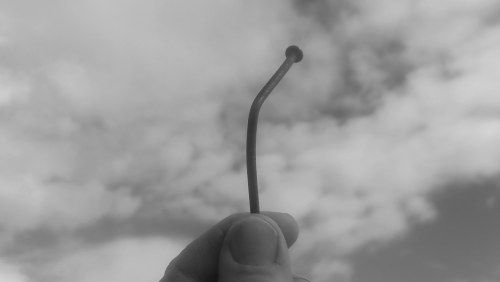







 Thomas J. Elpel is the founder of Green University® LLC and the author Green Prosperity: Quit Your Job, Live Your Dreams, and numerous other books about nature and sustainable living.
Thomas J. Elpel is the founder of Green University® LLC and the author Green Prosperity: Quit Your Job, Live Your Dreams, and numerous other books about nature and sustainable living.




















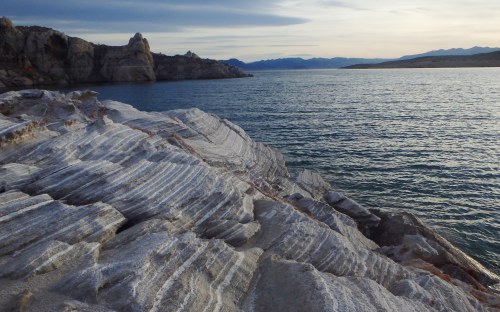






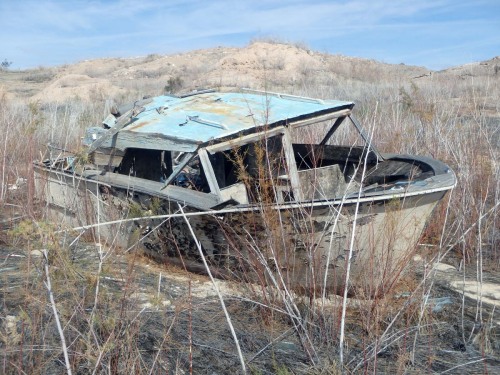
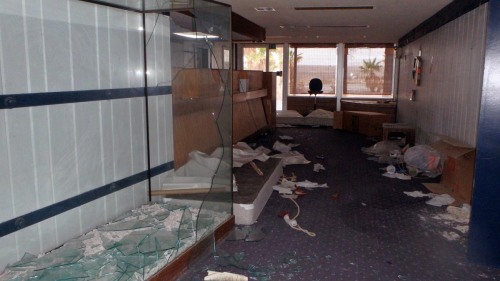














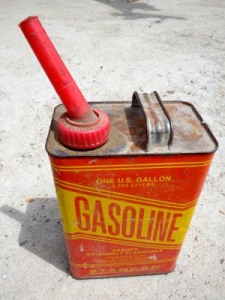



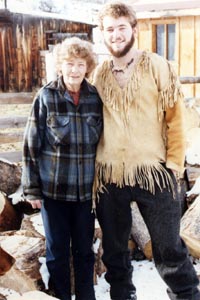



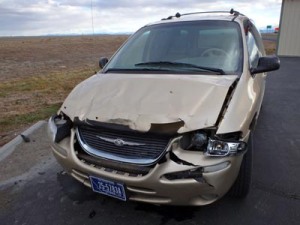





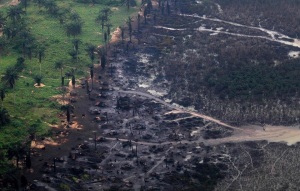


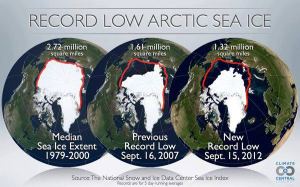

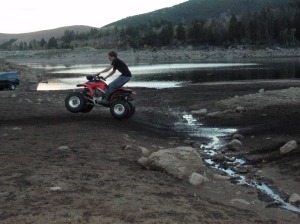
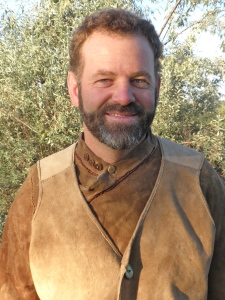


 Thomas J. Elpel Personal Website
Thomas J. Elpel Personal Website